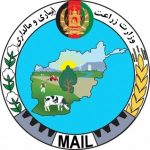This project is in line with the Afghanistan Agriculture and Rural Development Strategy, and supports the National Agriculture Development Framework, and the National Priority Programs. Particularly, this project would fall under and would contribute to the NPP 2 (National Comprehensive Agriculture Production and Market Development), and partially under NPP 1 (National Water & Natural Resource Development) and 4 (Strengthening Local Institutions). In addition it relies on a national program (the National Solidarity Program) for the implementation of one of its sub-components. This will be achieved by supporting integrated, mutually reinforcing activities at community level aiming at enhancing agriculture and livestock productivity. (i.e. addressing agriculture-related infrastructure gaps/priorities, introducing/strengthening appropriate livestock and agriculture packages/services, supporting weak areas of value-chain and linkages to markets), and strengthening the capacity of local communities/organizations and local institutions. Rationale for the interventions proposed through CLAP is summarized as following:
1. Construction of small-scale infrastructures aimed at enhancing agriculture productivity.
2. Increase dairy production and productivity, and improve dairy milk processing and marketing
3. Develop and strengthen traditional fowl systems, and develop small-scale commercially viable poultry systems
4. Develop and promote new drought resistant and high yielding improved varieties of wheat, food and forage and vegetable crops through the establishment of Village Based Seed Enterprises (VBSEs)
5. Enhance the livelihoods and resilience against predictable livestock emergencies among the Kutchi
The CLAP will specifically target the three following groups: (a) Small farmers and livestock-keepers, including the landless and those who lost their livestock and/or aspire to keep livestock or restock; (b) Women and female-headed households; (c) Resettled and nomadic Kuchis. It is expected that approximately 169,500 resource-poor rural households (equivalent to some 1,017,000 individuals) among an estimated 367 rural Community Development Councils (CDCs) within the nine districts would benefit from the project activities .









